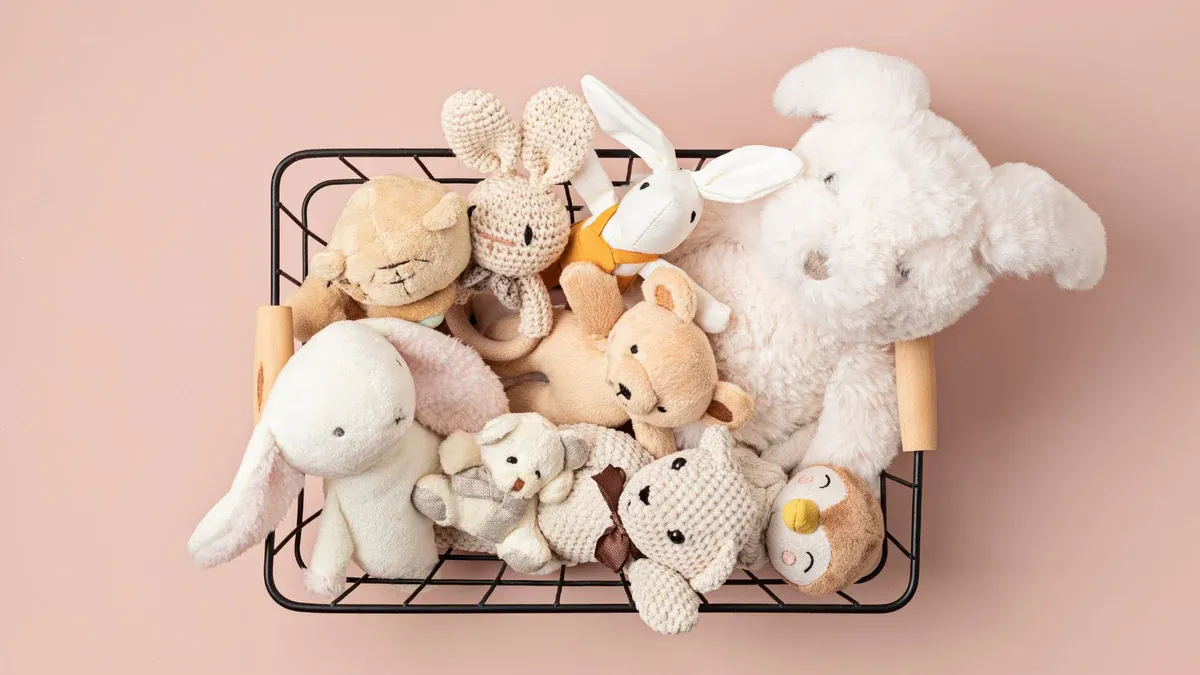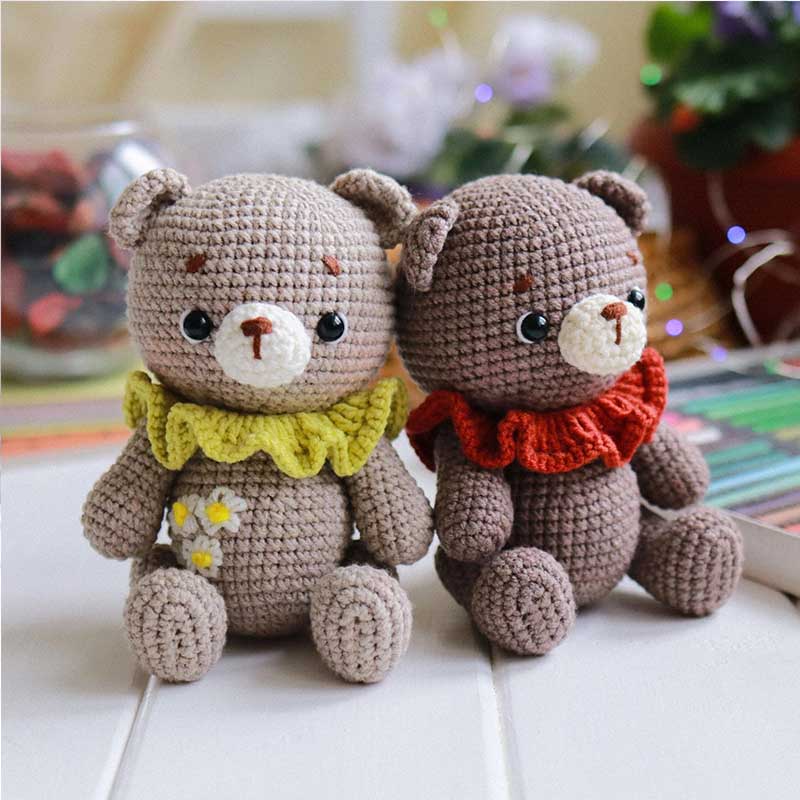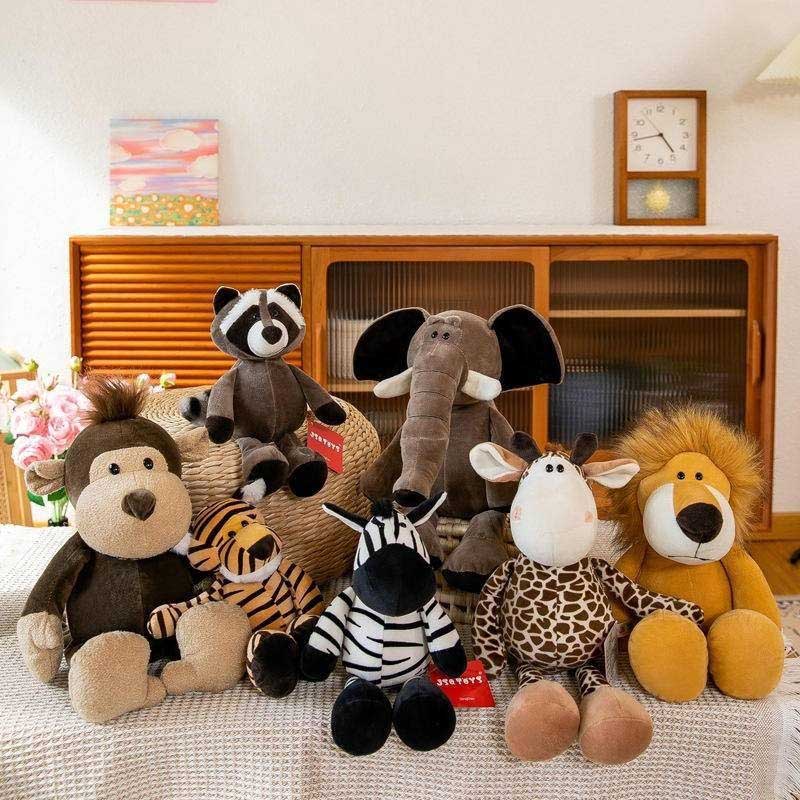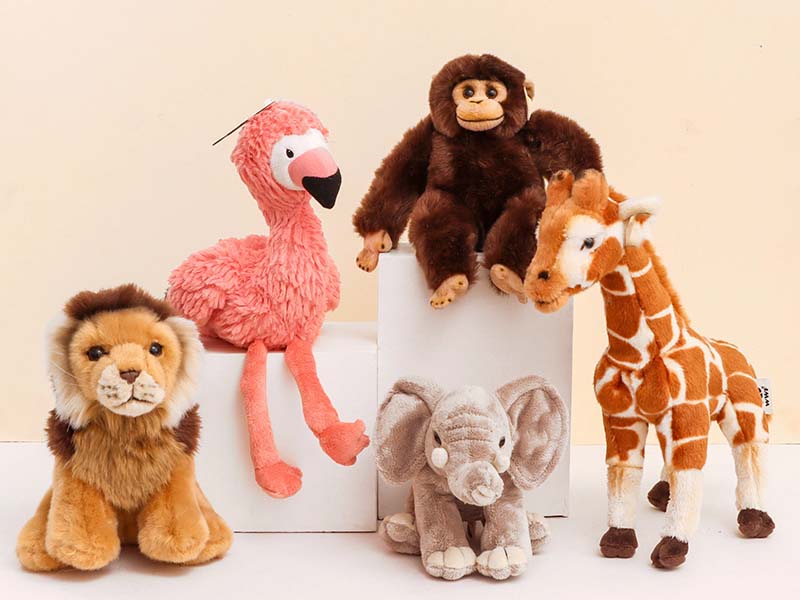Stuffed animals are loved for their softness, safety, and emotional value. What makes them truly unique, however, is the stuffing material inside. The type of filling determines how cuddly, durable, and safe a plush toy feels in the hands of a child or adult. For buyers, brand owners, and retailers, understanding different stuffing options is essential to ensure both quality and customer satisfaction. In this guide, I will explain the main stuffing types used in plush toys, their features, applications, and the value they bring to the market.
1. Polyester Fiberfill

Polyester fiberfill is the most common stuffing used in stuffed animals worldwide. It is made from fine synthetic polyester fibers that are lightweight, fluffy, and resilient. The biggest advantage of polyester fiberfill is its ability to hold shape even after frequent squeezing or washing. This makes it ideal for both children’s toys and large plush animals that need to remain soft and durable over time.
For buyers, polyester fiberfill offers excellent value. It is cost-effective, hypoallergenic, and easy to source in bulk, making it suitable for mass production. Parents also appreciate that it is safe, odorless, and washable, giving them confidence when purchasing toys for babies or toddlers. Additionally, it is versatile enough to be used in promotional plush mascots, decorative cushions, and even pet toys, thanks to its balance of softness and resilience.
One key benefit is its washability. Unlike natural fillings that may clump or shrink, polyester fiberfill retains loft and recovers quickly after drying. However, it is not biodegradable, which raises environmental concerns. In response, many factories—including ours—offer RPET fiberfill made from recycled plastic bottles, providing the same performance with added sustainability benefits.
| Attribute | Details |
| Texture | Soft, fluffy, and lightweight |
| Durability | Retains shape after squeezing and washing |
| Safety | Hypoallergenic, odorless, safe for babies |
| Applications | Teddy bears, plush dolls, cushions, pet toys |
| Limitation | Not biodegradable; standard versions lack eco benefits |
| Sustainable Option | RPET fiberfill from recycled bottles |
2. Cotton

Cotton has been used for centuries as a natural stuffing for toys and household products. It is soft, breathable, and gentle on the skin, making it a popular choice for baby toys and eco-friendly plush collections. Unlike synthetic fibers, cotton is biodegradable and appeals to consumers who prioritize sustainability.
In plush toy production, cotton offers a smooth, natural feel that resonates with buyers seeking traditional or organic products. It is especially popular in handmade dolls, baby comforters, and eco-friendly gift toys. Parents often trust cotton because it is hypoallergenic and chemical-free when sourced organically. However, cotton can be more expensive than polyester and may clump after repeated washing, reducing long-term loft.
One of the biggest values cotton brings is brand positioning. Retailers and brands use it to highlight “organic” or “eco-safe” qualities, appealing to premium markets. For example, organic cotton filling is often paired with GOTS-certified fabrics to create toys marketed to health-conscious families. While it may not be ideal for large plush animals due to weight and cost, it remains highly valued in niche categories.
| Attribute | Details |
| Texture | Soft, breathable, and natural |
| Durability | Moderate; may clump with washing |
| Safety | Hypoallergenic, chemical-free when organic |
| Applications | Baby comforters, dolls, eco-friendly plush |
| Limitation | Higher cost, less resilience than polyester |
| Market Value | Ideal for premium and organic-focused brands |
3. Foam

Foam stuffing is less common than fiberfill but offers unique benefits in certain toy categories. Foam can be cut into pieces, shredded, or molded, giving toys a firmer structure and slightly bouncy feel. Unlike polyester, foam creates a denser interior, making it suitable for plush items that need shape retention or semi-rigid designs.
In stuffed toys, foam is often used in novelty items, decorative cushions, or character mascots where firmness is important. It is also used in hybrid plush toys that combine softness with structure, such as plush chairs or large decorative animals. The biggest advantage is durability—it resists flattening and maintains form better than most fiber-based fillings.
However, foam is not always the safest option for infant toys, as it is harder and less breathable. It can also pose challenges in washing, since foam absorbs water and may take longer to dry. For eco-conscious buyers, traditional foam may not align with sustainability goals, though new bio-based foams are slowly emerging.
| Attribute | Details |
| Texture | Firm, bouncy, and semi-rigid |
| Durability | Excellent shape retention, less flattening |
| Safety | Not ideal for infants, less breathable |
| Applications | Mascots, decorative toys, plush furniture |
| Limitation | Harder to wash, less eco-friendly |
| Market Value | Suited for niche and specialty plush markets |
4. Plastic Pellets & Beads

Plastic pellets and beads are often used as a secondary filling material to add weight and texture. Instead of creating fluffiness, they give toys a more grounded feel, making them ideal for bean bag plush toys or plush animals that need realistic weight distribution.
For manufacturers, the biggest advantage is versatility. By combining pellets with polyester fiberfill, you can create toys that are both soft and tactile. This mix is common in “beanie” plush toys, weighted sensory toys, or products designed for stress relief. Parents often appreciate weighted toys because they provide comfort and calmness for children with anxiety or special needs.
The limitation lies in safety. Pellets must always be enclosed in secure inner pouches to prevent choking hazards. For this reason, they are not recommended for toys targeted at babies under three years old. They also increase overall toy weight, which affects shipping costs.
| Attribute | Details |
| Texture | Adds weight and tactile feedback |
| Durability | Excellent; plastic beads last indefinitely |
| Safety | Must be enclosed securely; choking risk if seams fail |
| Applications | Beanie toys, sensory plush, stress-relief toys |
| Limitation | Not suitable for infants, higher shipping costs |
| Market Value | Popular for sensory and collectible plush |
5. Memory Foam / Microbeads
Memory foam and microbeads are premium stuffing materials used for comfort-focused plush products. Memory foam adapts to body shape, creating ergonomic support, while microbeads give toys a smooth, flexible feel. Both are popular in plush pillows, neck cushions, and lifestyle plush toys that focus on adult markets as well as children.
For buyers, these materials signal high value and comfort. Memory foam plushies are often marketed as stress-relief or therapeutic toys, appealing to consumers beyond traditional children’s products. Microbeads, on the other hand, create a “squishy” sensation that is attractive in novelty toys and collectibles.
The main challenges are cost and safety. Memory foam is more expensive and not machine-washable, while microbeads must be carefully contained to prevent leaks. Despite this, their unique tactile qualities make them highly desirable for niche and premium categories.
| Attribute | Details |
| Texture | Supportive (memory foam) or squishy (microbeads) |
| Durability | Long-lasting but difficult to clean |
| Safety | Secure stitching essential, not for infants |
| Applications | Neck pillows, stress-relief plush, collectible squishy toys |
| Limitation | High cost, harder to maintain |
| Market Value | Strong appeal in premium and lifestyle toy markets |
6. Wool

Wool has been used for centuries as a natural filling material. It is warm, insulating, and provides a unique firmness compared to cotton or polyester. Wool is especially valued in handmade toys and organic plush collections, where natural materials are a selling point.
In practice, wool stuffing is often found in artisanal dolls, high-end plush animals, and eco-branded toys. Parents who value traditional craftsmanship often see wool as a safe and chemical-free choice, especially when sourced from certified farms. Wool is also naturally flame-resistant and breathable, adding extra safety benefits.
However, wool requires careful maintenance. It can clump with washing and may attract moths if stored improperly. Additionally, it is more expensive than polyester or cotton, making it less suitable for mass-market plush production.
| Attribute | Details |
| Texture | Firm, warm, and breathable |
| Durability | Moderate; may clump after washing |
| Safety | Natural, flame-resistant, chemical-free |
| Applications | Handmade dolls, eco-friendly plush, premium toys |
| Limitation | Expensive, requires special care |
| Market Value | Appeals to organic and artisanal toy buyers |
7. Kapok Fiber

Kapok fiber is a plant-based filling harvested from the seed pods of kapok trees. It is extremely light, silky, and water-resistant, making it one of the few natural fibers that rival polyester for loft. Kapok is completely biodegradable and considered one of the most sustainable stuffing options available.
In plush toy manufacturing, kapok is often used in eco-friendly or luxury collections. Its lightness makes it suitable for baby toys, while its smooth texture appeals to high-end markets. Buyers seeking a “green” alternative often choose kapok to enhance brand identity.
The downside is availability. Kapok is harder to source consistently in large volumes, and it can be more expensive than synthetic fibers. It also tends to compact faster than polyester, requiring extra care in design.
| Attribute | Details |
| Texture | Light, silky, and smooth |
| Durability | Compresses over time, less resilient than polyester |
| Safety | Natural, biodegradable, non-toxic |
| Applications | Eco-luxury plush, baby toys, organic collections |
| Limitation | Higher cost, limited supply |
| Market Value | Premium eco and sustainable branding |
8. Recycled Materials

Recycled stuffing has become increasingly popular as sustainability drives consumer choices. The most common is RPET fiberfill made from recycled plastic bottles, which replicates polyester’s softness while reducing environmental impact. Other recycled options include shredded textiles or reclaimed cotton blends.
For buyers, recycled fillings provide both marketing and environmental advantages. They allow brands to advertise “eco-friendly” or “made with recycled materials,” which resonates strongly with modern consumers. In addition, recycled stuffing helps reduce waste and supports circular economy practices.
While recycled materials can sometimes cost more than standard polyester, they provide a clear competitive edge in premium and eco-conscious markets. Many global toy brands already require factories to offer RPET or other recycled options to meet sustainability goals.
| Attribute | Details |
| Texture | Similar softness to polyester, varies by source |
| Durability | Strong and washable, like virgin polyester |
| Safety | Certified safe, eco-labeled |
| Applications | Sustainable plush toys, promotional mascots, eco-focused collections |
| Limitation | Slightly higher cost, sourcing variation |
| Market Value | Strong appeal in eco-conscious and premium markets |
Stuffing materials define the comfort, safety, and value of stuffed animals. From cost-effective polyester fiberfill to premium eco-friendly kapok and RPET, each option serves different market needs. At Kinwin, we guide buyers in selecting the right stuffing to match their brand goals and customer expectations.
Ready to design eco-friendly, safe, and market-ready plush toys? Contact Kinwin today to explore stuffing options tailored to your business needs.







